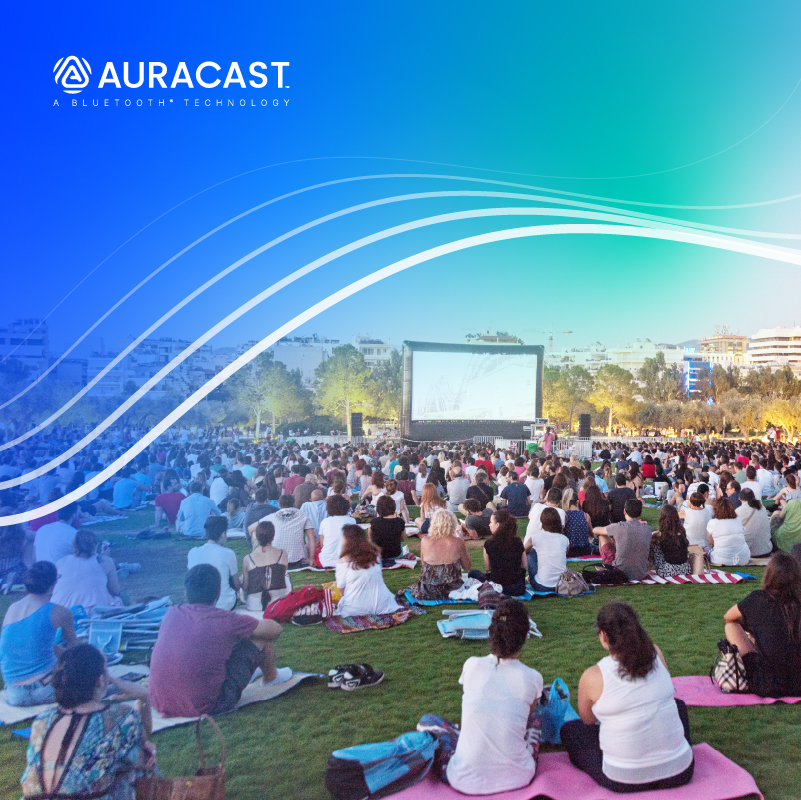One of the prominent reasons people attend a live performance is the ambiance in the room. Designers of venues like the Sydney Opera House put tremendous effort into optimizing the acoustics of the space, creating that special feeling of being there. It is difficult to get that immersive experience listening to streaming music.
As a lifelong music lover in his seventh year with hearing aids, I can tell you that having hearing loss does not reduce the desire to be fully in the room where it happens. A basic problem is that hearing aids are designed around the intelligibility of nearby speech. While better than nothing, they are not optimized for listening to live music. If the goal of a venue, and those performing in it, is to provide the highest level of enjoyment to the most people, this has to be taken into account. What is needed is an assistive listening system that replicates as closely as possible the sound quality and ambience perceived by normal-hearing people.
The Sydney Opera House did not make the decision to install Auracast™ broadcasts lightly. They have a process and carefully consider any proposal involving changes to infrastructure. It is interesting to understand why they chose to add Auracast™ broadcast audio when both hearing loops and FM systems were already in place. At the launch concert, I put on my end-user hat to experience the value that the Sydney Opera House sought to deliver.
Let the games begin

I had tried Auracast™ broadcast audio at a concert once before, at a one-day trial organized by GN ReSound at the Lincoln Center in New York. This time, I also had the opportunity to compare Auracast™ music quality with the hearing loop. Ultimately, it came down to one thing: While hearing loops have made the spoken word accessible to innumerable people over decades, and will continue to do so for some time, they are not ideal for music. This was immediately obvious at the Sydney Opera House.
I took my place well-armed to try Auracast™ broadcast audio and the loop with both high-quality earbuds (with compensation for my hearing loss) and my hearing aids. I used a GN ReSound Multi-Mic+, which could receive the loop signal and retransmit it as a second Auracast™ channel that I could quickly switch to. I hadn’t considered that others would notice the additional channel but several did and asked me about it afterward. (The name “Andy’s GN mic” must have IDed the culprit.) If I had thought about it beforehand, I could have staged the test for everyone else as well.
The results are in
The difference was astounding with either listening device. One reason is because the hearing loop bandwidth does not extend into the music treble, nor does it cover the lower bass. While perfectly suitable for voice, too much of the music is left out of the loop signal. The other reason is that the loop signal is monaural. All sense of space is missing.
In contrast, Bluetooth® connectivity and Auracast™ broadcast audio are designed for music. The transmission bandwidth is wider and in stereo. Even better, both hearing aids and earbuds allowed me to mix in any amount of live ambient. In both New York and Sydney, I found that a 50-50 mix was best for me. I got improved clarity through the stream while retaining the room ambiance that adds so much to the experience. It was no contest which was better.
Reaching more people
Auracast™ broadcast audio is not just for people with hearing aids. Anyone who could use additional clarity has only to bring a set of compatible earbuds to use the system. This is especially useful in reverberant settings. Some reverberance is always built into concert halls to create that sense of space. While ideal for music, reverberance can make spoken performances difficult to understand even for normal-hearing people. Check out this 20-second example.
As the Contact Theatre in Manchester UK pointed out, Auracast™ broadcast audio also supports other populations, such as neurodiverse audience members who may benefit from minimizing background noise, allowing them to focus solely on the performance. The multi-channel nature of Auracast™ broadcast audio also allows for transmitting descriptive audio. Imagine a low-vision person attending a play in which a narrator in the background describes the stage setting and movement.
This Week in Hearing
“I was actually getting calls and emails from people saying they didn’t know what it was, but they knew. They were like, ‘Does my hearing aid connect to this?’. After a bit of research, I realized they were talking about the development of Auracast™ broadcast audio,” said Janelle Ryan, senior manager of impact programs and operations at the Sydney Opera House, on the genesis of their ground-breaking decision to install Auracast™ broadcast audio in three of their most popular venues. It was their customers who first called attention to Auracast™ broadcast audio.
In a discussion I recorded at the launch event for the popular podcast: This Week in Hearing, she went on to explain that as they consider installation in their largest venue, the Concert Hall, she did not expect any difficulty even where multiple transmitters are required. Auracast™ broadcast audio made sense from both a user experience and ease of installation point of view.
I was actually getting calls and emails from people saying they didn’t know what it was, but they knew. They were like, ‘Does my hearing aid connect to this?’. After a bit of research, I realized they were talking about the development of Auracast™ broadcast audio.
Janelle Ryan, Sydney Opera House
Auracast™ broadcast audio truly is the next generation of assistive technology for those with hearing loss and more.